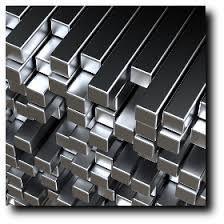The Role of Niobium in Superalloys

The Role of Niobium in Superalloys
Refractory elements are important alloying additions in both nickel-base and iron-nickel-base superalloys. They are responsible for the increased high-temperature mechanical properties present in current superalloy systems. In this article, we'll take a look at the role of niobium in superalloys.

The Role of Niobium in Superalloys
It has long been established that nickel-base and iron-nickel-base superalloys are “super” because they are strengthened by a dispersion of fine and coherent gamma-prime (y) and at times by gamma double-prime (y”) precipitates within the gamma (r) phase. These phases impart reasonably high tensile and creep strength at elevated temperatures while maintaining adequate ductility, fracture toughness, and fatigue properties.
These precipitates are formed by the precipitation reaction of Ni with Al and Ti or, in the case of the iron-nickel-base superalloy, Nb and Ti. The refractory elements, Nb and Ta, perform strengthening functions in both the y and the precipitating y’ and y” phases.
These elements can behave somewhat differently as carbide formers. They are also known to affect corrosion resistance and alloy stability. Both elements are bcc metals, and are highly misfitting in the fee Ni lattice; consequently giving rise to their well-deserved reputation as potent solid-solution strengthening elements in the y as well as in the precipitating phases. Tantalum and niobium are known to partition into the strengthening y and 7” phases and are also MC- type carbide formers.
Furthermore, to varying degrees, these elements increase incipient melting and solidus temperatures. This results in not only a higher and broader temperature range for solutionization and homogenization but also in segregation problems during the primary vacuum refining and melting process and during such secondary structures refining melt processes as VAR and ESR. However, Ta is known to decrease the tendency for freckling during the directional solidification of turbine blades.

The Role of Niobium in Superalloys
The detailed roles of refractory elements in superalloys are not well understood. In particular, the science-based technology for substituting one refractory element for another does not exist. For example, it is not known whether Ta and Nb are better strengtheners than other refractory elements, e.g., W and MO.
In addition, it is not known whether the large degree of misfit between the y and precipitating phases, due to refractory element additions, affects such properties as strain strengthening and y and r” coarsening kinetics, which is an issue with respect to long term applications.
In order to design and develop more enhanced superalloys, as well as to conserve on the more expensive and less abundant alloying elements, a better understanding of the role of these refractory elements on the mechanical and microstructural properties in superalloys is necessary.
Conclusion
Thank you for reading our article and we hope you've enjoyed it. If you want to know more about the role of niobium in superalloys, you can visit Advanced Refractory Metals for more information. We provide our customers with super high-quality refractory metals at a very competitive price.
{{item.content}}
LEVE A REPLY
{{item.children[0].content}}
{{item.content}}






